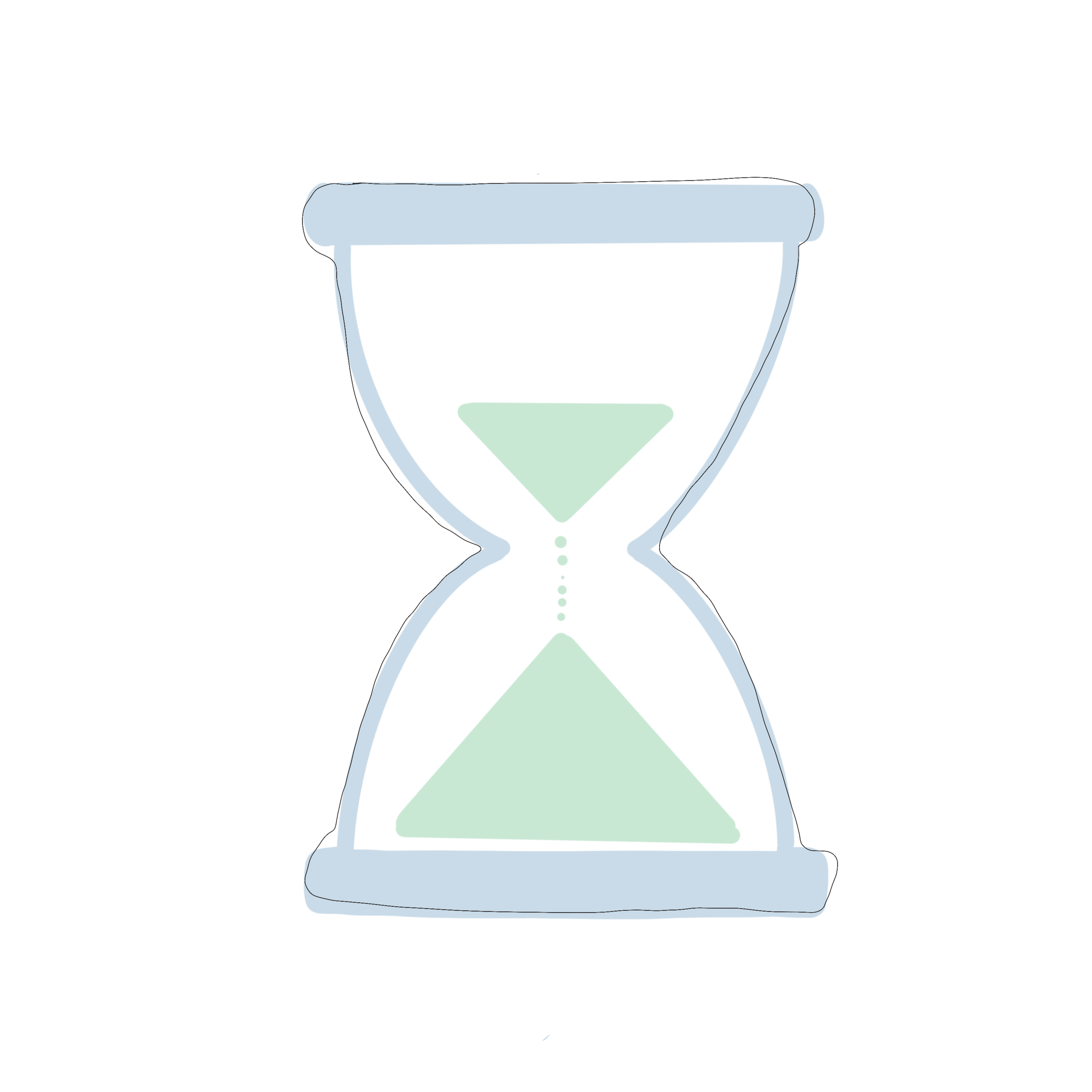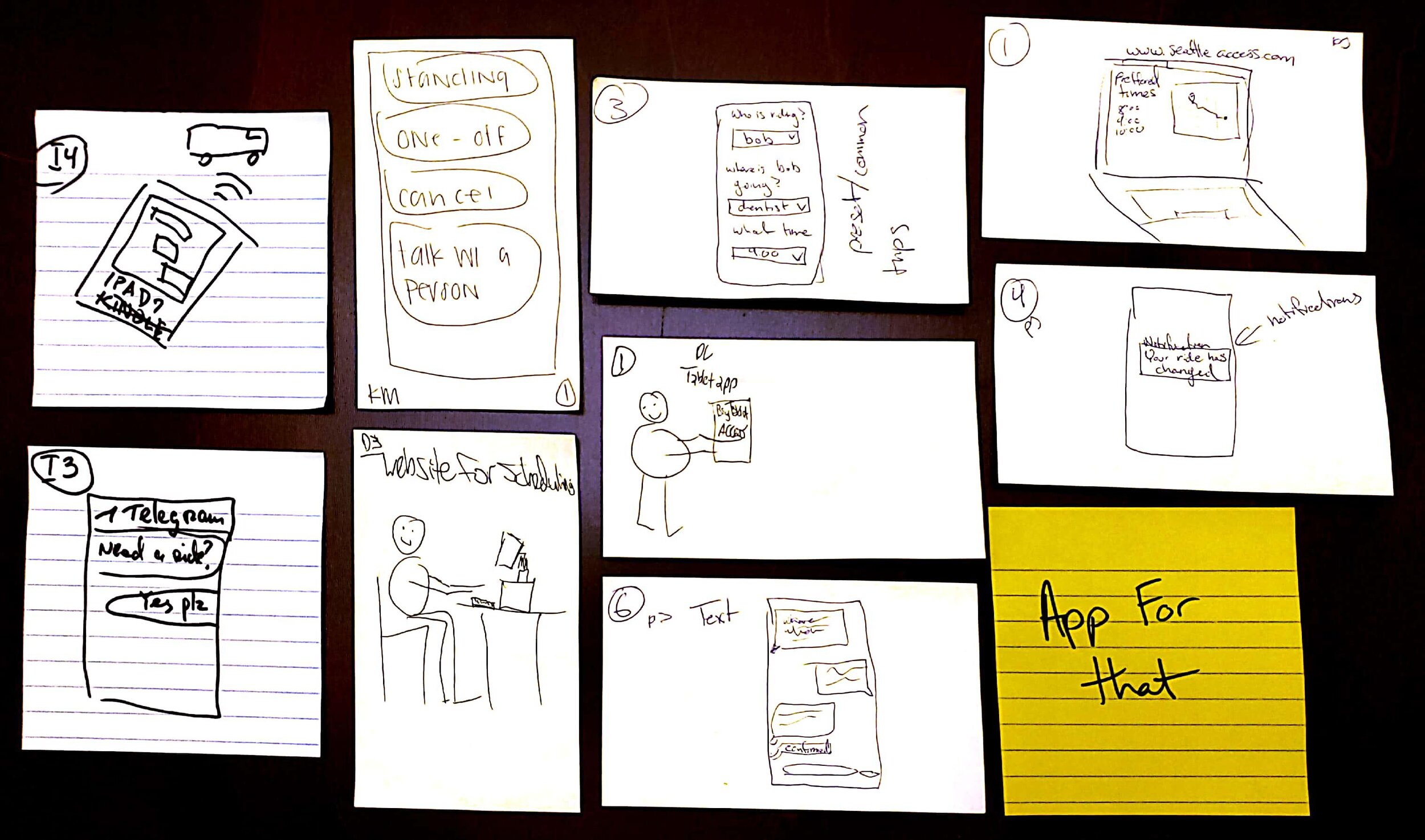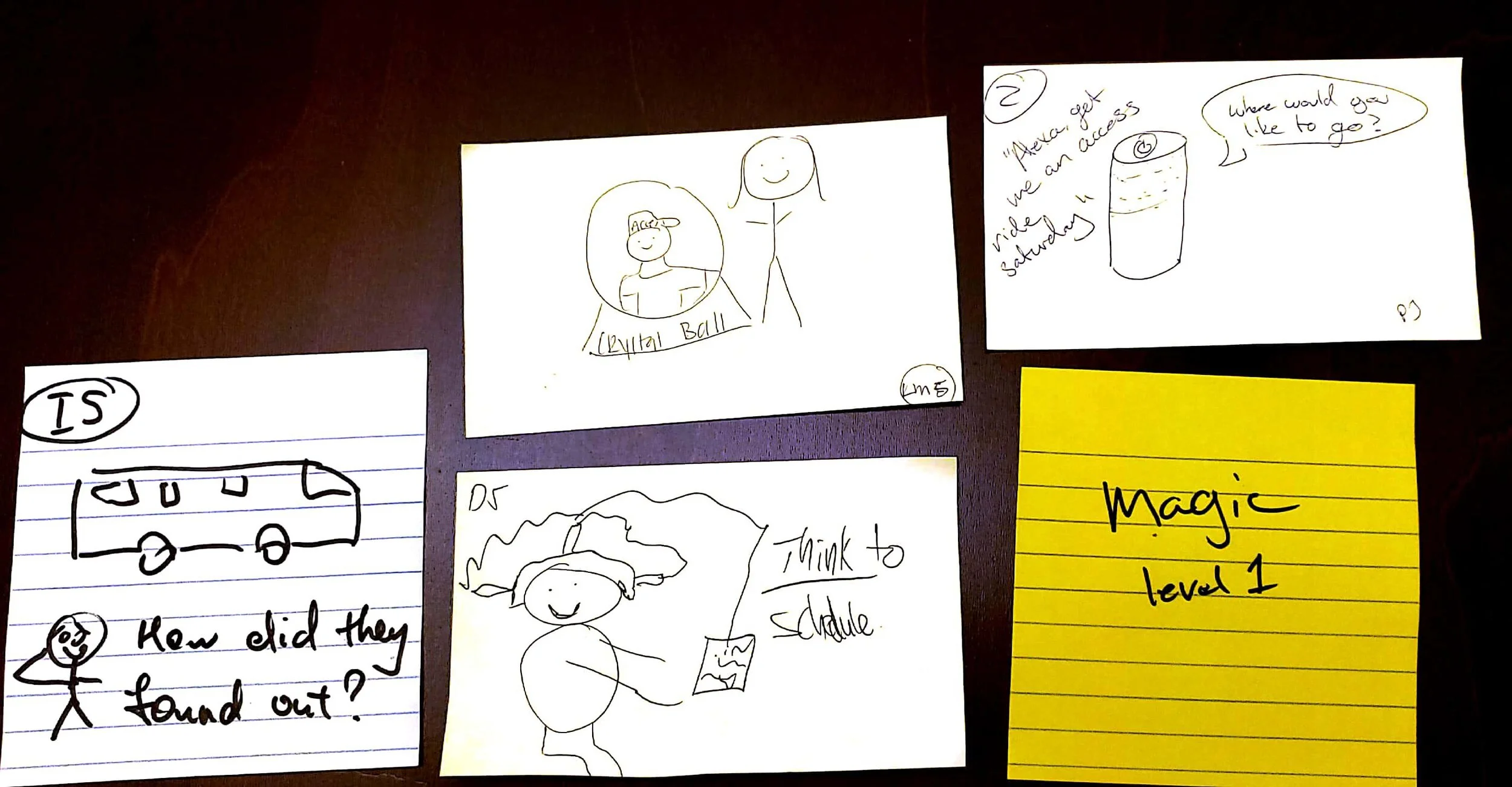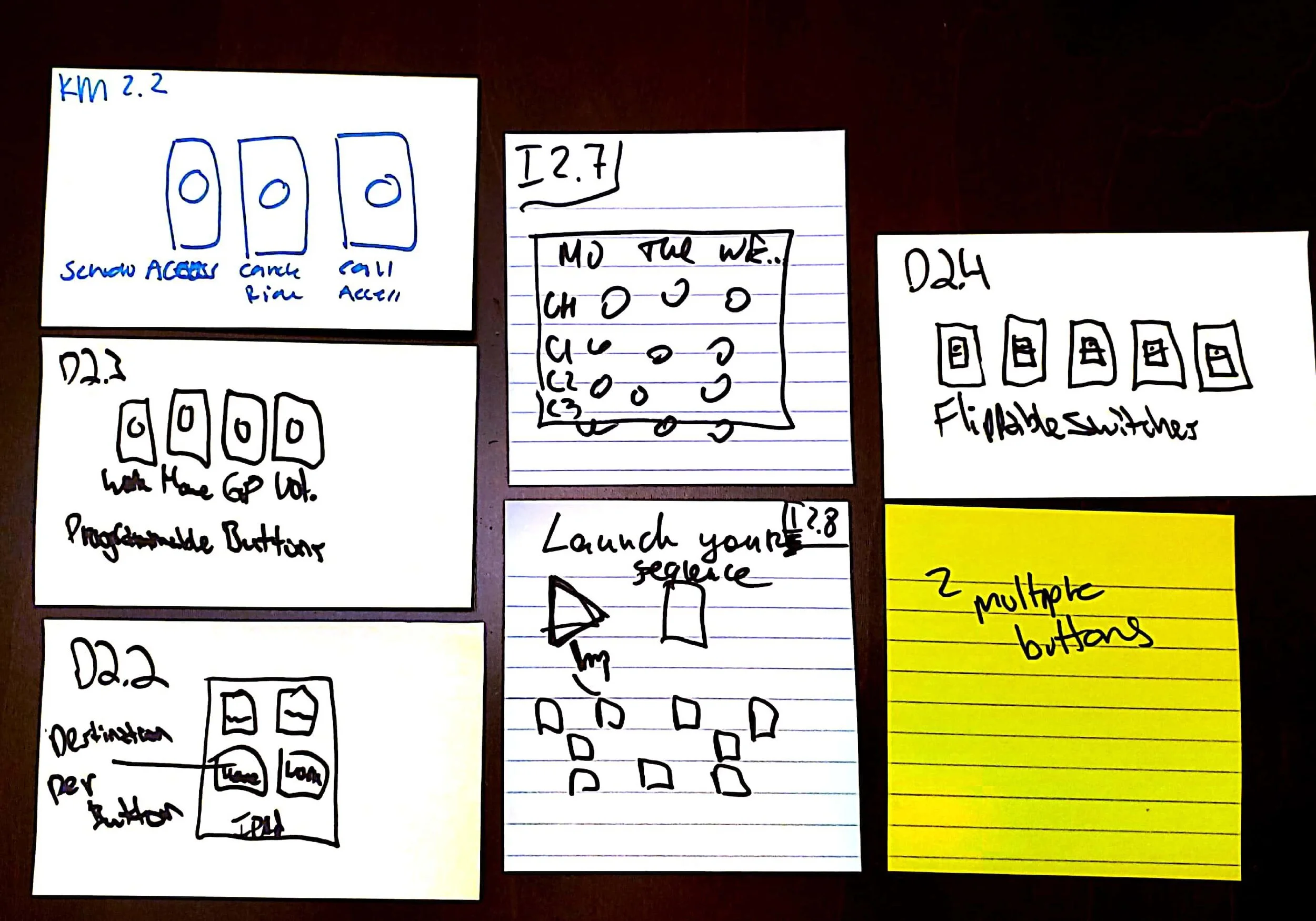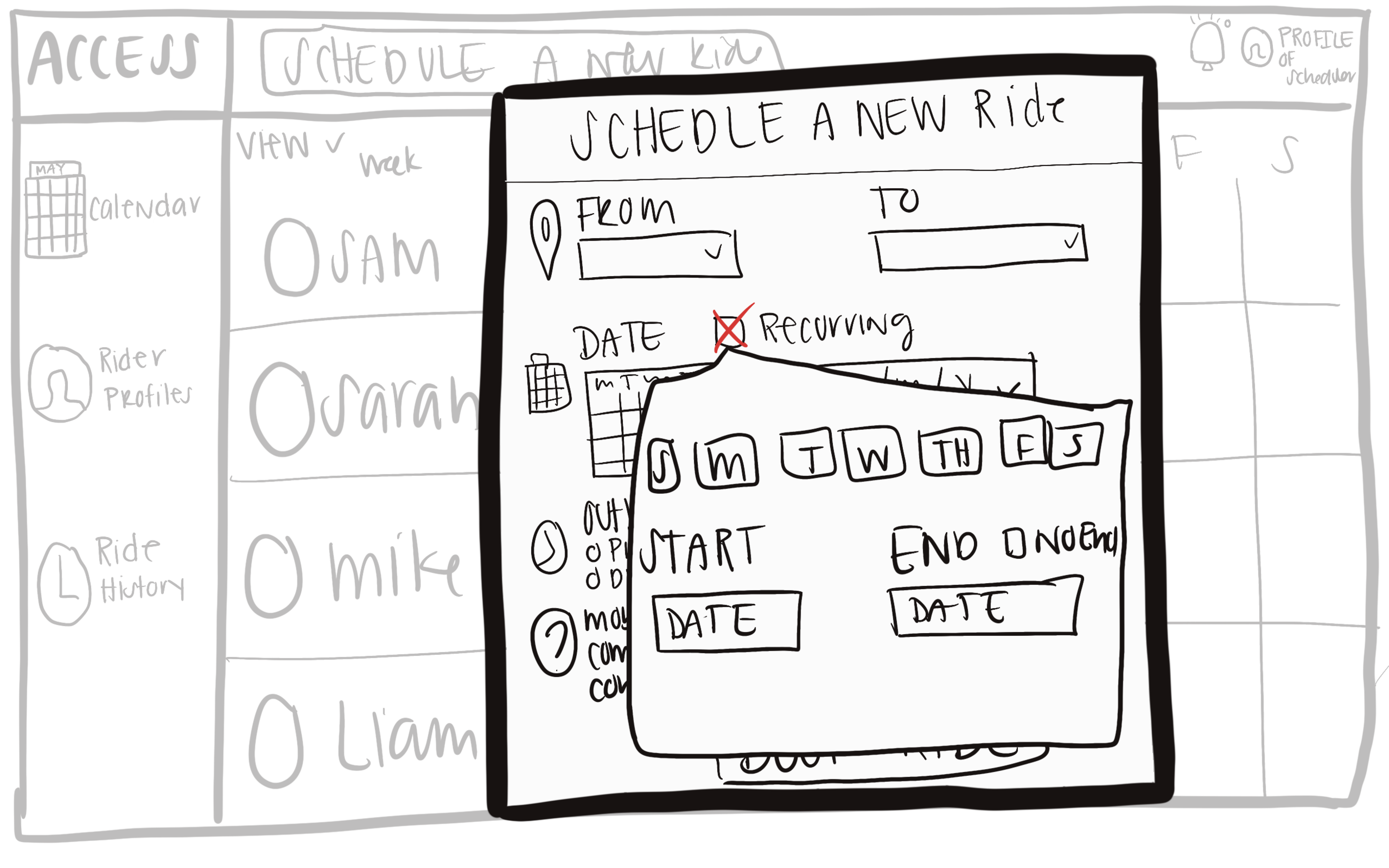Project Overview
What is Access Paratransit?
Access, an ADA paratransit service operated by Seattle Metro, provides alternative transportation to those unable to utilize traditional fixed-route options. Access transportation reduces barriers for thousands of individuals with disabilities in Seattle, allowing them to fully engage with their life and community.
While Access’s services are exceptional, the scheduling process is outdated, error-prone, and time-intensive. No one is more familiar with the problems associated with Access scheduling than adult family home care assistants (AHFCAs) who provide direct care, including scheduling Access rides, for up to 10 individuals with disabilities.
The Challenge
How might we improve the user experience around scheduling rides with Access?
The Nitty Gritty Bits
MY ROLE
UX Research & Project Manager
PRACTICES
User Interviews, Survey Design, Usability Studies, Data Synthesis, Sketching & Wireframing, and Report Writing
PROJECT DURATION
Two Months
TEAM MEMBERS
Paige (Visual Designer)
Daniel (Usability Testing & Research)
Ivan (Researcher & Visual Designer)
TOOLS
Balsamiq, Sketch, Google Forms, Figma
The Process
DISCOVER
To better understand our problem space, we conducted stakeholder interviews, a survey, in-person interviews, and a literature review. Our survey results captured quantitative data across a broad set of users while our in-person interviews allowed us to gather more nuanced and anecdotal insights from our primary users. Our literature review provided insights into how other cities have improved accessible transportation.
Stakeholder Interview
Why We Did It
Because I had worked with Access before, I had a significant amount of context that my team was missing. To remedy this, I reached out to an Access Reservationist Coordinator to ensure my team has the same context before starting.
My Role
I recruited and conducted the semi-structured interview with the Access Reservationist Coordinator with my team members.
What We Found
This interview helped establish context about the way Access operates and rides are scheduled.
Access Ride Logistics
There are several types of rides: one-way trips, round trips, will call trips, and recurring or standing ride trips.
All rides have a 30-minute pick-up window. It is important to tell the reservationist the time you want to be picked up OR if there you need to be dropped off at a destination as that helps them pick the correct route for you.
Access rides can only be conducted in King County and destinations must be registered addresses in the Access system.
Communicating With Access
Rides can only be scheduled, canceled, or modified by calling into Access and talking to a reservationist.
There is only verbal confirmation of rides, not physical letters, emails, or phone calls confirm rides.
There is no way to directly communicate with the bus drivers; you must call an Access reservationist to find ride details and expected arrival times.
Access Limitations
Rides are scheduled via phone between the hours of 8:00 AM and 5:00 PM.
Rides must be scheduled 24 hours in advance but no more than 7 days in advance.
If you want to schedule a ride for the next day, it must be done by 5:00 PM or you will not be able to schedule a ride.
Online Survey
Why We Did It
The purpose of the survey was to gain insight into user behaviors, needs, challenges, related to scheduling Access rides. The survey helped us to capture quantitative and qualitative data anonymously, allowing participants to respond honestly.
My Role
In collaboration with my team member, Daniel created the Google forms sheet. Daniel focused on developing the questions while I created the form itself with the content he provided.
What We Found
With our stakeholder interview completed and a collective understanding of Access scheduling, we began our research journey with a survey to understand users’ behaviors around scheduling and using Access. Here’s what we found:
Where To?
Access is most frequently used to transport riders to work, medical appointments, and personal enrichment activities.
The most popular type of ride to schedule is a recurring ride, also known as a standing ride defined as “same place, same day and time”.
How Long?
AFHCA schedule rides for up to 10 individuals. Because of this, they typically set a specific time, often Sundays between 10:00 AM and 12:00 PM to schedule all rides for the week. This process can take up to 2 hours.
Riders who schedule rides for themselves schedule one to two rides per week and it takes about 30 minutes to schedule.
Could Be Better…
While users are frustrated with the scheduling process, they are also frustrated with so many other aspects of Access that are beyond the scope of our project.
Alternative methods of accessible transportation are limited.
Semi-structured User Interviews
Why We Did It
The purpose of our semi-structured interviews was to gather essential context and data related to our primary user's personal experiences, opinions, behaviors, attitudes, and desires.
My Role
I developed the interview script and questions, conducted two of three user interviews, and synthesized our insights to inform the design requirements.
What We Found
AFHAs find scheduling Access rides to be time-consuming, error-prone, and inconsistent.
AFHAs schedule rides on Friday, Saturday, or Sunday between 9:00 AM & 12:00 PM to avoid long wait times.
Scheduling can take between 5 minutes and an hour.
Rides must be scheduled 24 hours in advance and cannot be booked more than seven days in advance
which is inconvenient when scheduling for multiple people.AFHAs wish they had an alternative way to schedule Access rides, ideally a web-based scheduling system
since they are given a work computer but not a work cell phone.AFHAs are often frustrated with other aspects of Access outside of the scope for this project.
“I wish I could see what they [schedulers] see”
“ I am a big fan of Access I just hate that I have to worry so much about scheduling rides. I just don’t feel like it should be this complicated? ”
Literature Review
Why We Did It
The literature review allowed us to further identify the challenges
and opportunities facing paratransit users and schedulers outside
of Seattle and inform our design solution.
What We Found
New York has made progressive steps in ADA transportation by implementing online and mobile application scheduling services to provide users with a flexible, easy-to-use system to schedule rides.
DISTILL
Our research indicated that while Access is an essential catalyst for progress in providing equal access to public transportation, the current phone-based scheduling system is outdated, rigid, and prone to error. This negatively impacts both customer experience and system effectiveness. While phone scheduling was once standard, this scheduling method is no longer adequate in our technology-centered world.
Our distillation process included defining the current scheduling process, explicitly defining the pain-points associated with scheduling Access rides, developing personas, and creating design requirements.
Synthesis of Research
After conducting research, I like to synthesize findings into easily digestible sections. These brief, overarching insights allow me to quickly reference my findings as I progress through the design process, bringing me closer to the user at each stage.
Scheduling rides with Access is…
Time Intensive
Phone-based scheduling is outdated and limiting.
Access is busy between 2:00 and 5:00 PM resulting in a long wait time to reach a reservationist.
Scheduling can take anywhere from 5 minutes to 1 hour, and AFHCAs plan specific times out of their day to avoid long wait times.
For AFHCAs, who schedule rides for up to 10 people, the scheduling process requires significant planning and constant mental effort.
Not only is scheduling time-intensive, but changing or canceling a ride can be too!.
Error-Prone
Miscommunication is common when scheduling rides resulting in late pick-ups, early drop-offs, and missed rides.
There is no written confirmation of rides, only verbal confirmation by the reservationist at the end of the booking.
Environmental factors such as distracting noises, low call quality, and language barriers result in miscommunication about ride details.
AFHCAs schedule rides for multiple people and need to track all of their schedules, being able to have a visual of the rides they have scheduled for the day or week is essential.
Inconsistent
Reservationists vary in their level of effectiveness when scheduling rides. Depending on the reservationist's skill, scheduling may be swift and accurate or time-consuming and inaccurate, impacting the rider's ability to get where they need.
The Access scheduling software is slow, resulting in long wait times even when an AFHCA reaches a reservationist. At times, the scheduling system has failed and forced AFHCA to schedule rides repeatedly to confirm the ride was booked.
Personas
With the primary pain points of schedule Access flushed out, we developed our primary personas. Our personas help inform our designs by keeping the users at the center of every decision. I was responsible for creating our primary persona, Stacy. While my team member, Ivan created our secondary person, Steve.
Design Requirements
To design a solution that addressed the pain points of Access's current scheduling, we developed three categories of design requirements. If you want to read the whole list of design requirements, you can see that here— just thought I’d spare you from too many bullet points.
01 | Streamline Scheduling Experience
Users must be able to schedule rides in advance, schedule multiple rides in one sitting, schedule companion rides, and schedule recurring rides.
02 | Reduce Miscommunication
Users must be able to schedule rides without talking to a reservationist, see ride scheduling details, change rides easily, and there must be a visual element.
03 | Eliminate Wait Time for Scheduling
Users must be able to schedule rides at their desired time, without restriction to normal business hours and users must be able to schedule rides without having to wait or be in a queue.
DESIGN
Brainstorming
As a team, we ran through the crazy 8 exercise which was great for team building and generating ideas.
My Role
Here are four of my favorite sketches I made during the session -some feasible and others a bit outrageous.
If you know anything about DJing, you’ll know the midifighter. While great for making music, probably not the best solution for scheduling Access rides… could be fun though.
A classic phone app sketch- can you really go wrong?
A magic ball that connects you to an Access scheduler with no wait! Could work well, but who really knows the tool traveling between magic balls would take on a person? Better not to test it.
Affinity Mapping
After the brainstorm, we had over 100 ideas drawn out and needed to make sense of it all. To do this, we took stock of our doodles and drawing and placed them into categories. Here’s what we came up with!
Our Top Idea
Even broken into categories, we had too many ideas in play to move to the next stage of design. As a team, we decided on the one idea that would be most feasible for our timeline and real-world application-a web-based scheduling application.
Since most AFHCAs are not given cell phones for work, a phone application would not have been the best solution to meet their needs. Here are a few sketches I created for our top idea of a web-based scheduling system.
This would be the home page of the scheduling app. Users would be able to easily see the scheduled rides they have for the week, change rides, schedule new rides, and filter the views easily.
This is what a user would see if they selected the “recurring” ride option.
This is what the user would see if they decided to schedule a ride.
Low-Fidelity Prototype
With our ideas flushed out, and a clear direction, we built out our low-fidelity prototype using Balsamiq.
Here are a few of the most impactful screens. You can watch a full video of our prototype in action here!
View: Home Page of Stacy Kent, AFHCA
Users see a calendar view of all scheduled and upcoming rides.
Creating a calendar view allows users to all the rides they have scheduled in one place.
Visualize: Users like Stacy Kent can quickly see ride details for multiple riders in one central place.
Fix: Users can easily see if there’s a problem with a scheduled ride and fix it without needing to call Access.
Schedule: Users can easily navigate to schedule a ride from the dashboard. This feature enables users to schedule rides without calling Access.
View: Scheduling Page, Stacey Kent, AFHCA
On the scheduling page, users can schedule individual or companion rides, various trip types and request rides without calling Access.
Add a Companion: Now, users like Stacy can request a companion for the rider with ease. Before, adding a companion to a ride was confusing and often resulted in a stressful pickup experience.
Ride Type: Users can see the type of ride they are requesting, whether it be a one-way, round trip, or recurring ride. Scheduling recurring rides this way makes it easier for riders to obtain standing ride status.
Request: Users can request rides without calling Access or waiting in a cue.
View: Problem With Scheduling Page, Stacy Kent, AFHCA
Users can solve problems before rides are scheduled.
Fix Me: Users can clearly understand if there is an issue with a ride they are scheduling and fix it before it becomes a problem on pick-up day.
Try Again: Users can identify alternative time slots that might fit the rider's needs if no other times are available.
Test & Redesign
With our prototype developed, our team began usability testing. I developed our user scenarios and tasks to evaluate the effectiveness, efficiency, and satisfaction of our initial prototype, and facilitated three of the five usability tests.
The feedback from our testing helped refine our final high-fidelity prototype.
Usability Testing & Redesign
Why & How We Did It
We conducted the usability test to evaluate the effectiveness, efficiency, and satisfaction of our low-fidelity prototype. We used Zoom to record our sessions, Excel to track data, and handwritten observation notes to collect qualitative data.
Based on our findings, we used Sketch to iterate upon our design to create a more user-friendly high-fidelity prototype. Here are the high-level findings and the changes we made that reflect user feedback.
My Role
I recruited and coordinated with AFHCAs to schedule usability testing on our low fidelity prototype. I developed our usability test task scenarios, testing materials, and conducted three of the four usability tests.
For a more detailed summary of our usability test findings, you can read the whole report here.
View: Scheduling Page, Stacy Kent, AFHCA
To improve the effectiveness of our scheduling tool we…
Visibility: Increase the visibility of the “add a companion” option
Will Call: Eliminate will call and return ride options from the tab bar, simplifying how users select a single ride vs a recurring ride
Return Trip: When scheduling a ride, users will be able to elect a return trip after selecting their departure trip; Add return trip scheduling option
View: Home Screen, Stacy Kent AFHCA
To improve the efficiency of our scheduling tool…
Rider Panel: Reduce the size of the rider panel on the left-hand side of the screen
Interaction: Make the rider panel interactive, allowing the user to initiate scheduling a ride for that rider
Fix Me: Make the red exclamation point in the rider panel interactive
View: Scheduling Screen, Stacy kent, AFHCA
To improve the satisfaction of our scheduling tool…
Destination: Improve readability of starting and destination locations
Font Size: Increase font size of rides times
Aesthetics: Improve the overall look of the system “it’s just not nice to look at”
REFLECT
Here’s what I Learned
Check Yourself: What makes sense to me as a designer might not make sense to a user. During usability testing, it was clear that some of the design decisions we made and thought were important to the function and form of our scheduling tool were not important to the user. Keeping the user's actual needs, goals, and desires in mind during development results in a better solution.
Logistics of Listening: User interviews are quickly becoming one of my favorite steps in the human-centered design process. Developing empathy for users early in the design process helps me keep the user in mind throughout the whole process. And, what's better than having the opportunity to connect with people?
My Redesign: At the time, this was my first UX design process, and was not comfortable with prototyping and knew little about design principles. Because of this, my team members worked on a majority of the prototyping and design. Since this project, however, I’ve learned about design principles, become comfortable with design tools, and developed my prototyping techniques, so I am currently working on a redesign of our final project! Come back again soon to see the final product.









